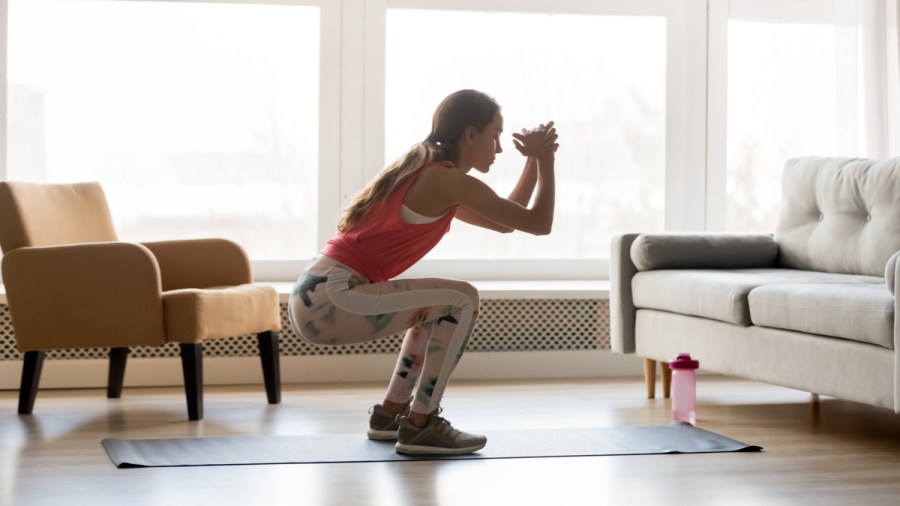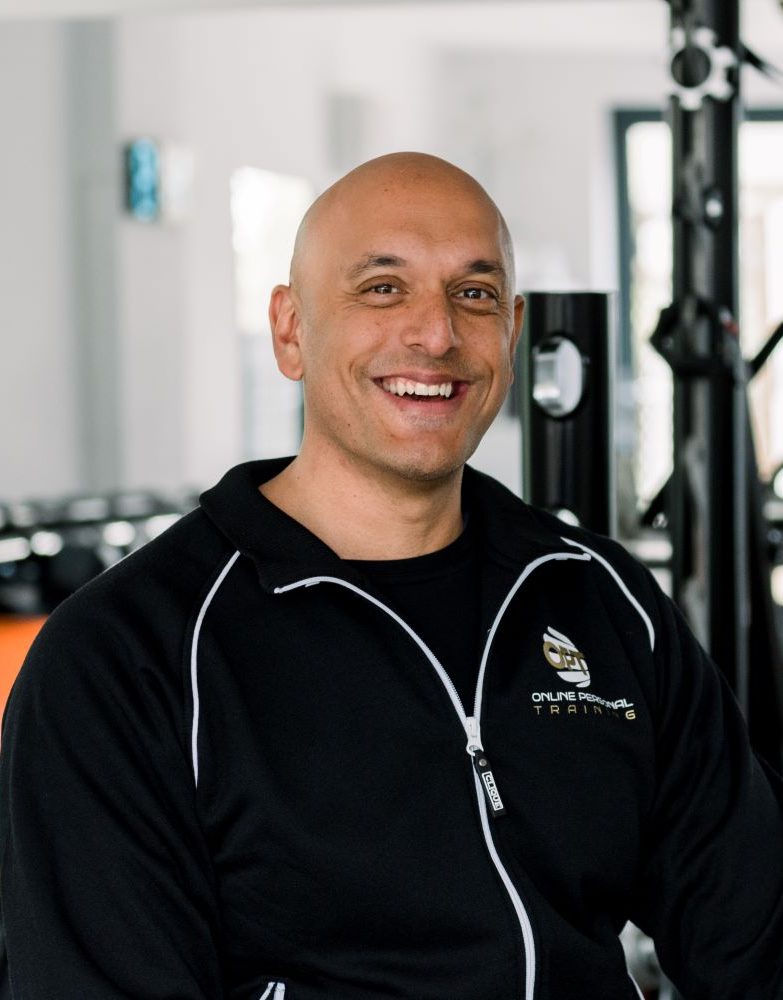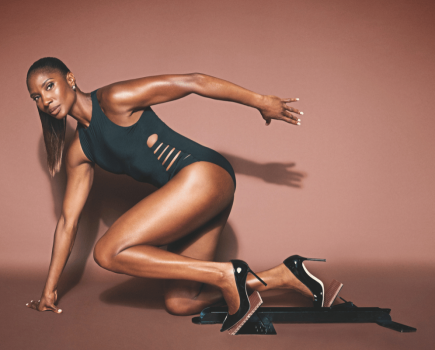With your glutes being some of the largest muscles in your body, it pays to get them into shape if you want to ramp up your metabolism, burn fat and also improve your posture. Learn how to tone your bum at home with this glute workout from The Wellness Maestro, Nolan Sunnassee…
By Nolan Sunnassee (Illustrations: Melissa Bailey)
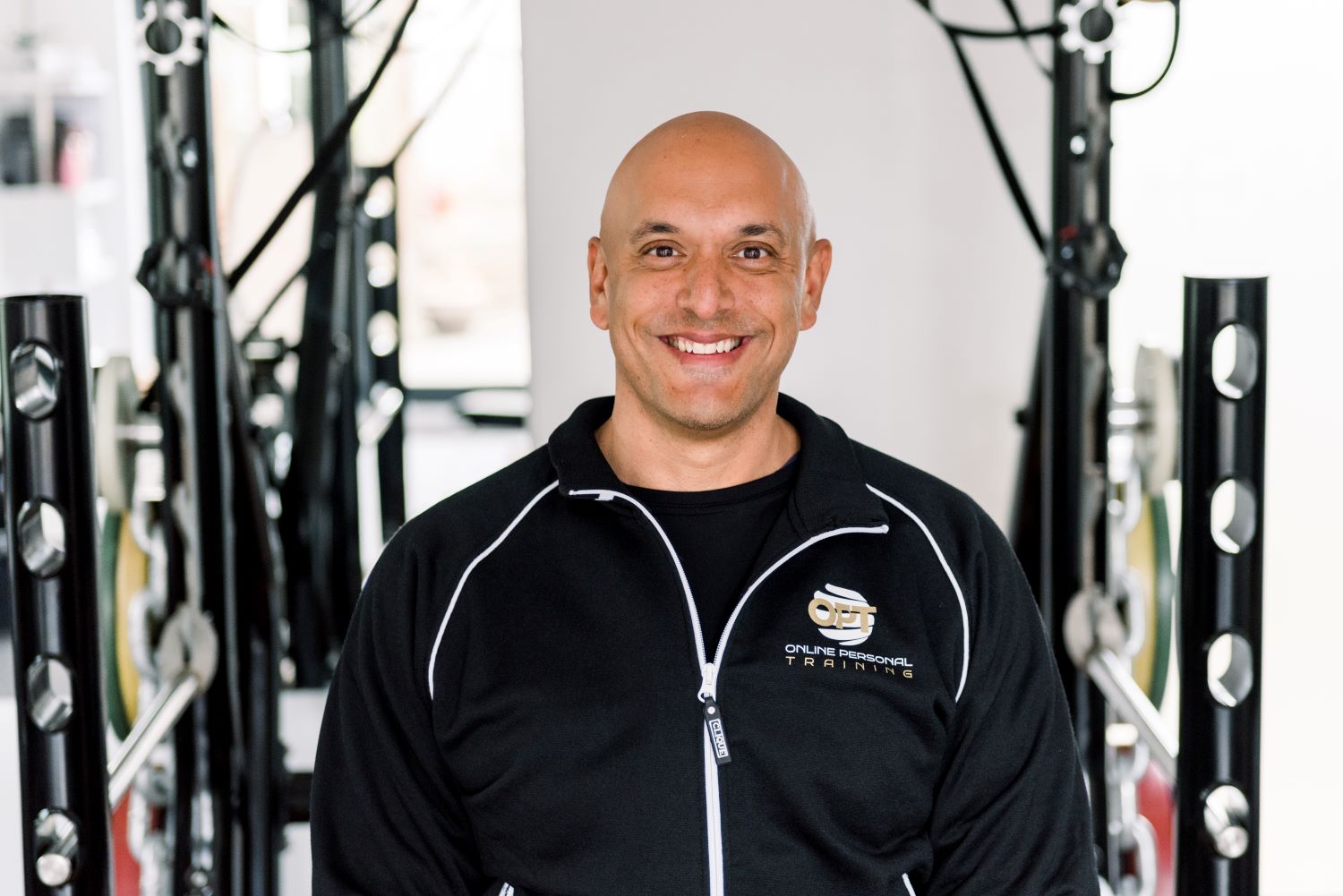
Nolan Sunnassee helps his clients aged 40-75 lose weight, improve their posture and recover from injury.
Your glutes are one of the most important and powerful muscles in your body, responsible for so many actions, such as kicking, pulling your legs back when you run, or going from sitting to standing. You use them every day so, in theory, they ought to be strong, and yet you can easily end up with weak glutes if you’re too sedentary – and because you lose muscle mass as you get older unless you proactively exercise to maintain it.
If you tend to sit a lot, either at a desk, in a car, or on the sofa, over time this leads to tight hips and lower back. Your glutes, on the other hand, start lengthening and weakening and because they’re stretched and underused. This means that when you do perform a move, whether it’s a squat or lunge or simply bending to pick up a heavy box, instead of your glutes doing most of the work, your hip flexors and lower back take over.
Does sitting down affect your glutes?
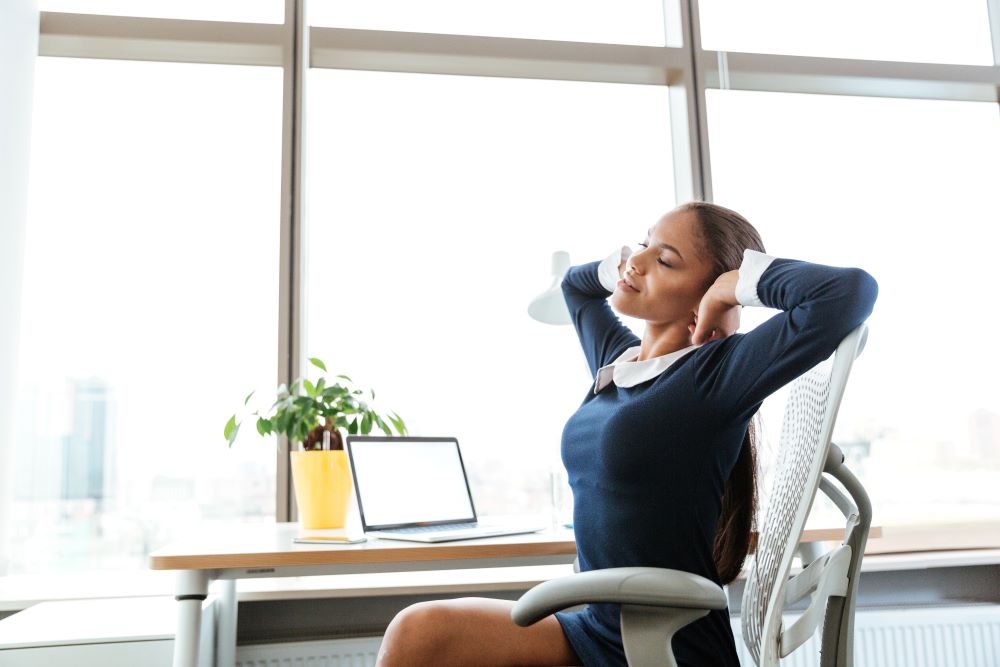
If you sit in an office all day, it’s best to avoid using sitting machines like the rower or bike when in the gym.
Some types of exercise can also contribute to an imbalance between glute strength and quadriceps (front of thighs). For example, if you’re into cycling, you’ll be mainly working your quads. And, because you’re in a seated position, you’ll never fully engage your glutes as your legs never extend all the way behind you.
Rowing, canoeing, and anything where you are sitting down will also cause the same problems. If you do happen to spend the day commuting then sitting in an office, it’s best to avoid using the rower and bike when in the gym. Instead, aim to elongate your body rather than compounding the problem of being hunched over.
Or if you do like to cycle or row, make sure you focus on lengthening your quads between cycling sessions by doing stretches and also strengthening your glutes.
Being in a more upright position gives your glutes a better chance of working properly. So, for your cardio warm up, stick to the step machine and treadmill. Then move on to the glute workout outlined below to strengthen and tone your bum.
What are the benefits of toning your glutes?
As mentioned, you lose muscles mass as you get older if you don’t stay active. Maintaining lean muscle helps you improve your body’s insulin resistance and stave off type 2 diabetes. Too much sugar in the blood is dangerous, as we know, and insulin acts to get it into your muscles where it can get to work. So, the more muscle mass you have, the easier it is for your body to utilise any sugar floating around.
Also, muscle tissue uses up more energy than fat, meaning you’ll use more of the energy in your food. And with the glutes being some of the largest muscles, it pays to work those over the smaller upper body ones as you’ll see and feel gains in less time. Not that you shouldn’t do upper body moves by any means, but focusing on your lower body will provide a bigger boost to your metabolism as you’ll be activating more muscle fibres.
How do I know if my hips are too tight?
This quick test can show whether your hips are too tight and, in turn, whether your glutes are probably not firing on all cylinders.
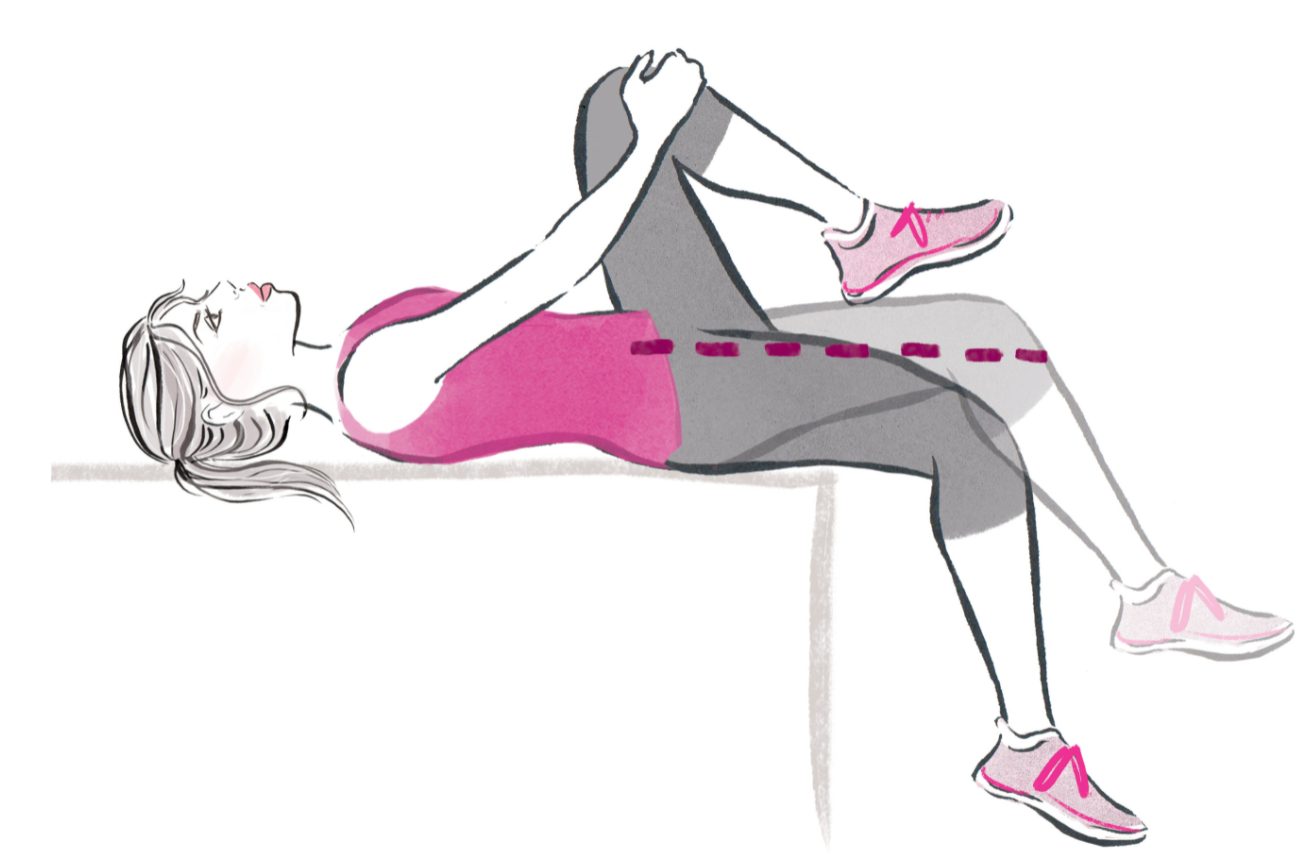
1) Lie on your bed on your back with your legs hanging off the edge (if your feet easily touch the floor, find something higher to lie on as you want your legs to dangle).
2) Pull one knee in towards your chest tightly and hold it there with both hands.
3) Notice the position of your outstretched leg: the knee should ideally be lower then the hip. If you knee has come up higher than your hip, it indicates tightness in your hip flexors, which can in turn mean weak glute muscles.
What are the different muscles in the bum called?
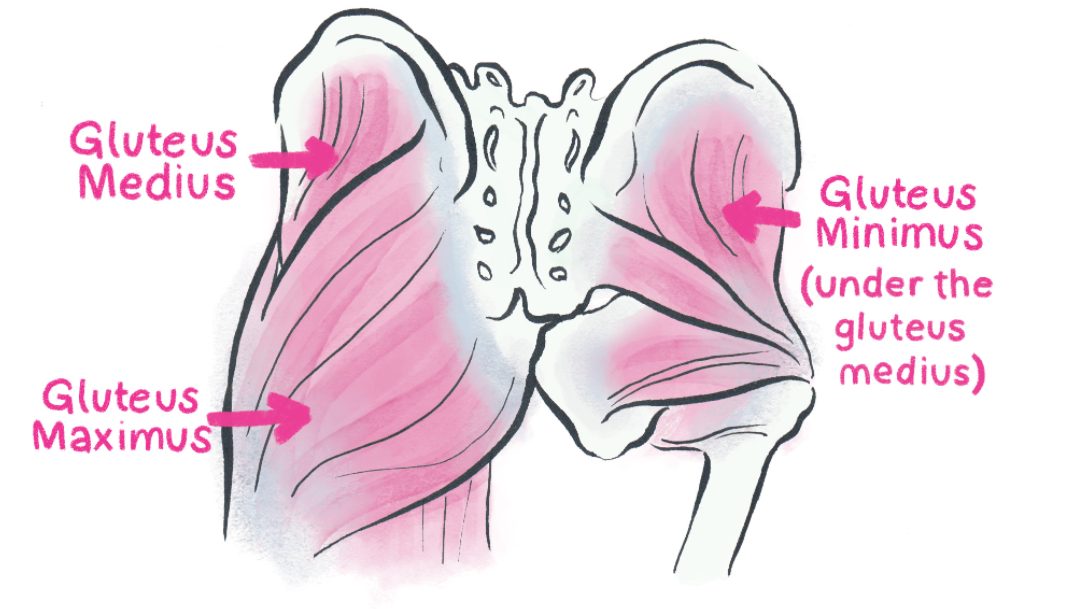
Everyone’s heard of the gluteus maximus – the largest muscle in your bum – but did you know there are two others? Your gluteus medius runs from your hip joint down to the top of your thighbone (the femur). This is the muscle that’s in action when you’re doing any kind of side leg raises. The gluteus minimus is the smallest of the three, and also runs from the side of your hipbone down to your femur but underneath the glute medius. It is used each time you do a hip extension, i.e. kicking your leg back behind you. These three aren’t the only muscles in your bum and hip area – there are lots of smaller stabilising ones – but they are the key three when it comes to doing any kind of glute-building and toning workout.
4 glute workout exercises to tone your bum
These glute workout exercises are effective at working all three main bum muscles: the glutes maximus, medius and minimus. It’s best to do them in this order as it allows full activation of your muscles. It’s important to build up stability in this way before moving on to harder exercises or using heavy weights, as trying to do too much too soon, if you have an imbalance and weak glutes, will simply mean the wrong muscles, most likely your quads, end up doing most of the work.
1. Bridge lifts

- Lying on the floor, have your feet flat on the floor close to your bum. Your arms should both be straight down on the floor beside you.
- Activate your glutes to push your hips up towards the ceiling, being careful not to go so far that your chest pushes into your jaw – aim to keep your shoulders and upper back still on the ground so it’s really only the lower body that’s up (this will also make it harder work for your glutes).
- Squeeze and hold at the top for a few seconds, then lower back down. Do 20 repetitions.
- PROGRESSION: Once you can comfortably do this, you can make it harder by picking one foot up off the floor when your hips are both in the raised position. Make sure you keep your hips level when you lift– they’ll want to dip down on the side you lift but aim to keep them flat.
2. The clam
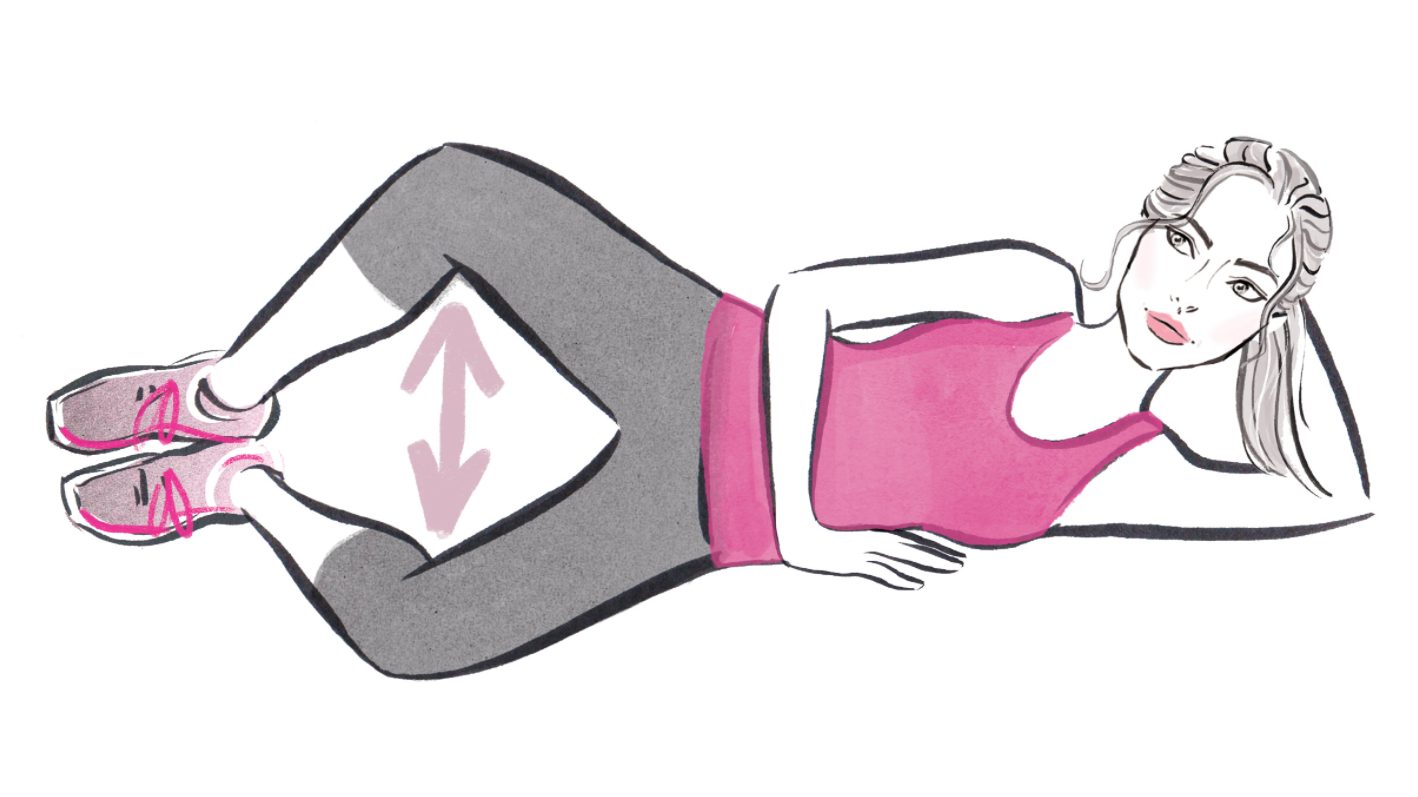
- This glute workout exercise is an oldie but a goodie. Lie on your side, with legs stacked one on top of the other. Put your top arm down on the floor in front of you for support.
- Keeping your feet together, lift your top knee up as much as you can, squeeze your glute at the top then lower back down.
- Do 20 reps then repeat on other leg
- PROGRESSION: Have your top leg straight throughout movement.
3. Single-leg reaches
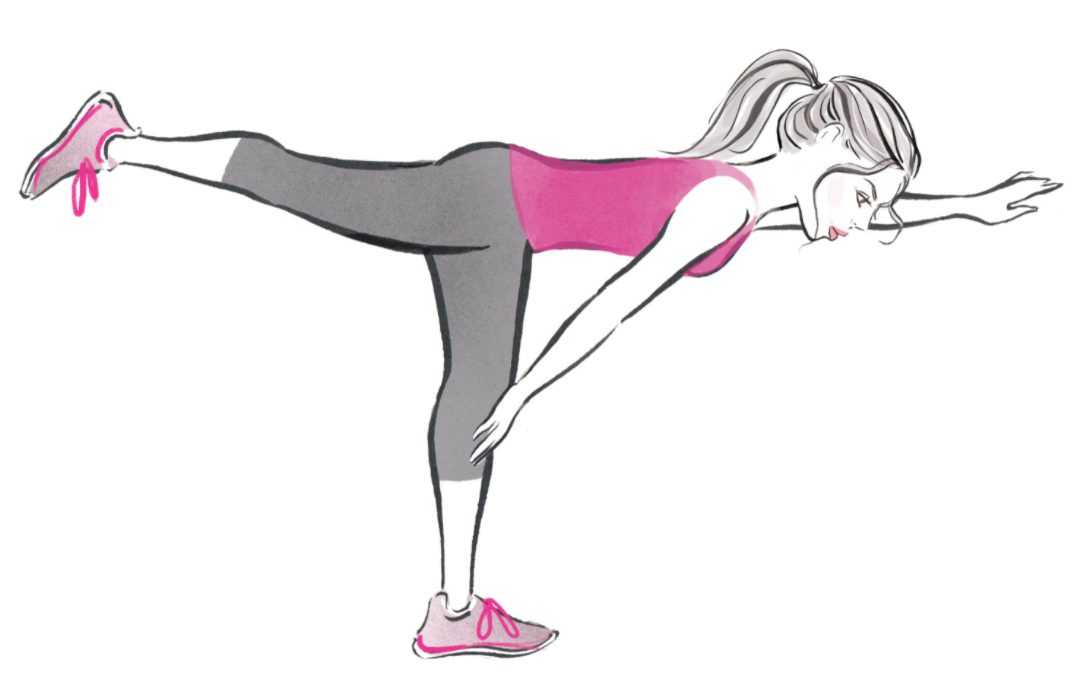
- Stand on one leg, then, keeping your back flat, tip forwards towards the floor, raising your other leg out behind you – a bit like a seesaw.
- Touch the knee of your supporting leg then, squeezing the glutes on your supporting leg, push back up to standing.
- Perform this 20 times then change leg.
- PROGRESSION: Hold a weight in the hand that’s reaching downwards
4. Deep squat
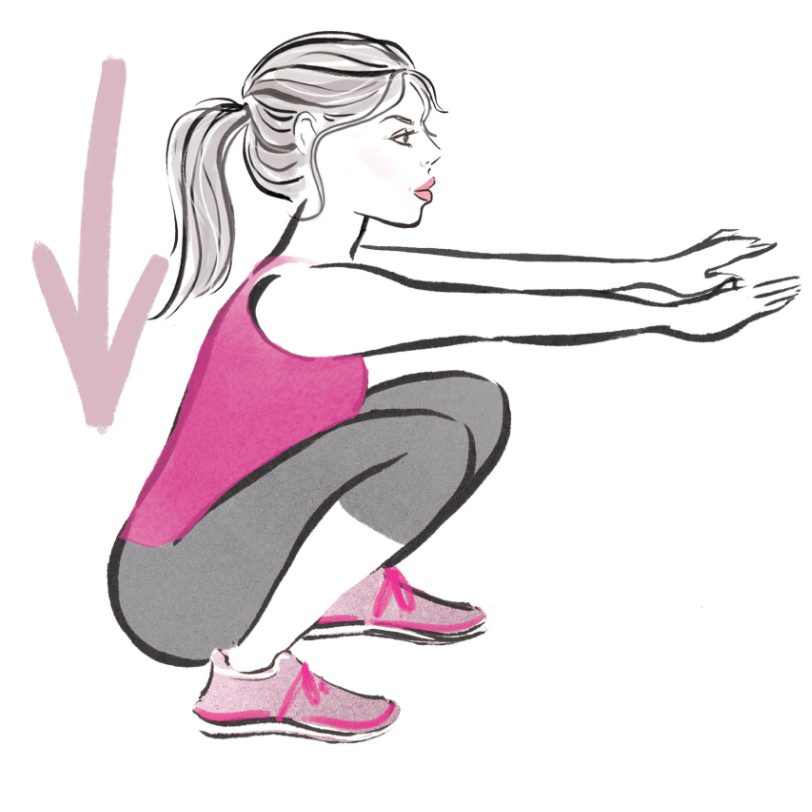
- Have your feet shoulder-width apart.
- Keeping your chest up, bend your legs and sit as low as you can go with your back flat – ideally your bum will touch your heels but most people can’t get that low due to tight calves. If so, put a thick book or block or some sort under each heel to raise the slightly up off the floor, then try again and you’ll find you can go lower.
- Squeeze your buttocks and push mainly through your heels back up to the start position. Repeat 20 times.
- PROGRESSION: Pause at bottom for 3 secs on each repetition. Also, once you’ve mastered this move you can start adding weight to increase the benefits.

